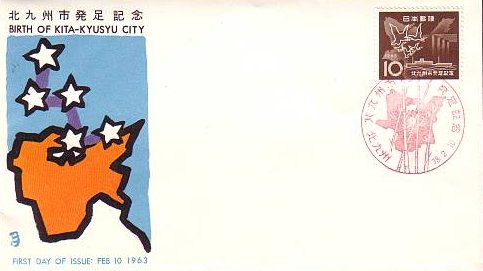
Tumulus Period 300 CE-552 CE
The Japanese state, known as Yamato, was formed during this time. This is related to the fact that the Yamato region seems to be the region where the government basically evolved. This is determined by the spread of ritual goods produced in that region towards outer areas. This indicates that various clans and their chieftains were awarded titles such as "Leders of Provinces" or "Attendant Families." The titles were considered to be very important.
Another name by which part of this period is known is Kofun,, standing for "old tomb." The name comes from earthen mounds that were used to cover stone burial chambers of the rulers. Some of these were very large, the best know being the Emperor Nintoku's (died around 399CE) tomb in Sakai. This time covered 195 hectares and contained vases, jewels, mirrors, weapons and other things.Later kofun contained rich treasures, indicating the concentration of wealth and power in the Yamato region.
The tombs had sculptures known as haniwa placed around them and on them. These showed weapons, horses and even human beings, complete with the types of clothing that they wore. Both men and women wore upper garments that were open in front and had close cut sleeves. Men wore loose trousers and women wore long pleated skirts.
The largest kofun is associated with the emperor Nintoku and is on the Osaka Plain and covers over 80 acres.
Specific dates of importance
300 CE: Approximate ending of Yayoi period. The Wei Chronicle is published in China and refers to "Yamatai". This becomes the earliest written account of Japan. The book said that Japan was divided in many petty states, that it's ruler was a cloistered sorceress, Himiko, and that the men were law-abiding and their wives uncomplaining.
(Note: the dates given for the reigns of the Emperors are approximate; various sources will give you considerably different dates. For example, for Emperor Nintoku, the 313-399 date can be seen, but also a date of 395-427 will sometimes be given.
313-399: Emperor Nintoku
400-450: Emperor Richu (Richii?)
400 CE: Approximate date for emergence of Yamato dynasty
c.403: The Chinese method of writing in characters is imported into Japan.
406-410: Emperor Hanzei
412-453: Emperor Ingyo
453-456: Emperor Anko
456-479: Emperor Yuryaku. Known for his brutal nature.
480-484: Emperor Seinei
485-487: Emperor Kenzo
488-498: Emperor Ninken
498-506: Emperor Buretsu
507-531: Emperor Keitai
531-535: Emperor Ankan
535-539: Emperor Senka
538: Buddhism is introduced into Japan.
539-571: Emperor Kimmei

|